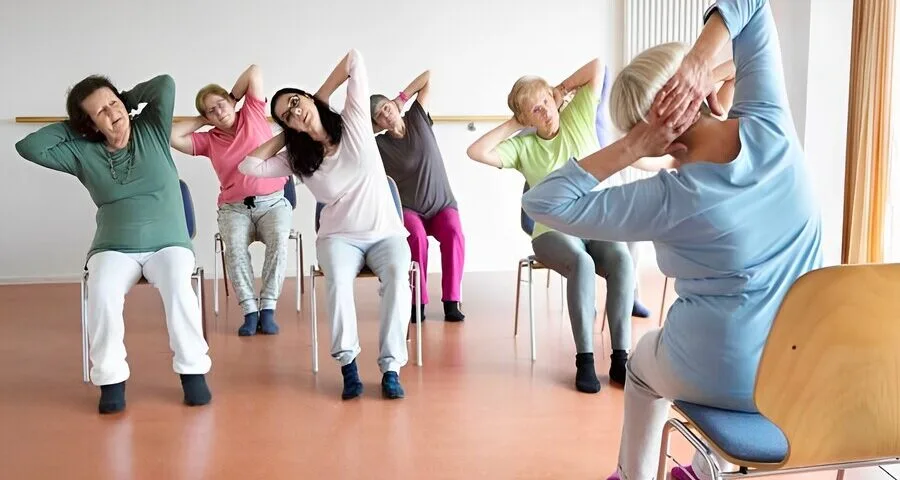
5 Chronic Back Pain Exercises for Elderly + Benefits
What do you think are the best chronic back pain exercises for the elderly? Before we get into the best exercises for seniors with back pain, let’s take a brief look at the problem. According to the American Chiropractic Association (ACA), back pain is the second most common reason for medical visits. Back pain can be caused by arthritis, heavy lifting, being overweight, poor posture, and even physiological stress. In fact, the American Chiropractic Association states that most cases of back pain are mechanical, meaning that the pain is less likely to be caused by an infection, fracture, or other medical issues, such as kidney stones or blood clots.
This means that preventing or treating back pain at home may be the best treatment option in many cases. In addition, one of the most effective ways to prevent back pain, especially as we age, is to keep our muscles strong and our spine flexible, and to stay active throughout the day. It may be hard to believe; But you can achieve all of these with a few simple stretching exercises. Of course, be sure to check with your doctor or physical therapist before doing these stretches, or if you have severe back pain. In this article from humanhealthmag, we introduce some back pain stretches for seniors.
Causes of Back Pain in the Elderly
Before introducing chronic back pain exercises for elderly, it is better to first familiarize ourselves with the causes of back pain in the elderly. Back pain in the elderly can occur due to various problems, the main causes of back pain are pressure and physical damage caused by environmental factors. Muscle cramps, fractures and injuries caused by them are the most common causes of back pain in the elderly. Sudden movements of the arms and legs, incorrect methods of lifting objects from the ground, as well as lifting very heavy objects, cause serious injuries to the elderly.
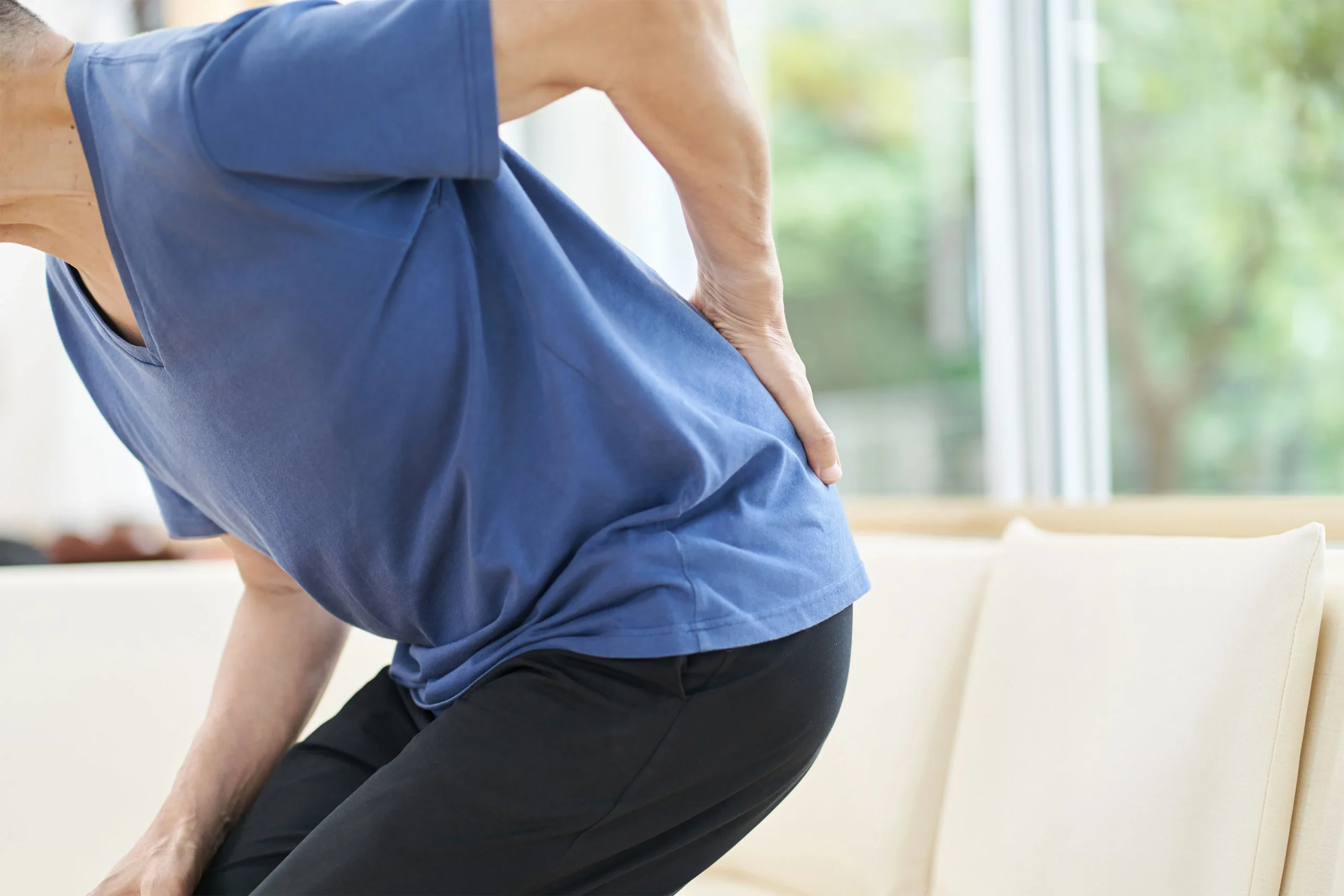
Also, standing and sitting for a long time, excessive use of the computer and stretching the neck forward, and long driving contribute to the occurrence of back pain in the elderly. Structural problems can also cause severe back pain. Sciatica is one of the most common of them. Sciatica is caused by pressure on a disc that causes a herniated disc or rupture, and presents as severe, shooting pain. Other factors that contribute to back pain include osteoarthritis and spinal stenosis, osteoporosis, which is more common in older women, abnormal curvature of the spine, and ruptured or bulging discs.
Why Chronic Back Pain Exercises for the Elderly Are Important
Doing chronic back pain exercises for the elderly has many benefits for these people. As we said in the article What Causes Elderly to Be Bent Over, strengthening the back muscles is very important for several reasons. In fact, weak back muscles are one of the main factors in the occurrence of back pain. Strong back muscles support the spine well and prevent pressure and damage to the discs and joints. Strengthening these muscles can significantly prevent the occurrence of back pain and chronic back pain or reduce its severity.
Weak back muscles can also cause hunchback, sagging shoulders and generally poor posture. Strengthening these muscles helps maintain the correct alignment of the spine and improves posture. Good posture not only gives a person a better appearance, but also prevents neck, shoulder and back pain. Back muscles play an important role in maintaining the stability and balance of the body. Strengthening these muscles helps improve balance and coordination, reducing the risk of falls and related injuries, especially in older adults. In addition, strong back muscles act as a buffer for the spine, protecting it from injuries caused by heavy lifting, sudden movements, and other traumatic factors.
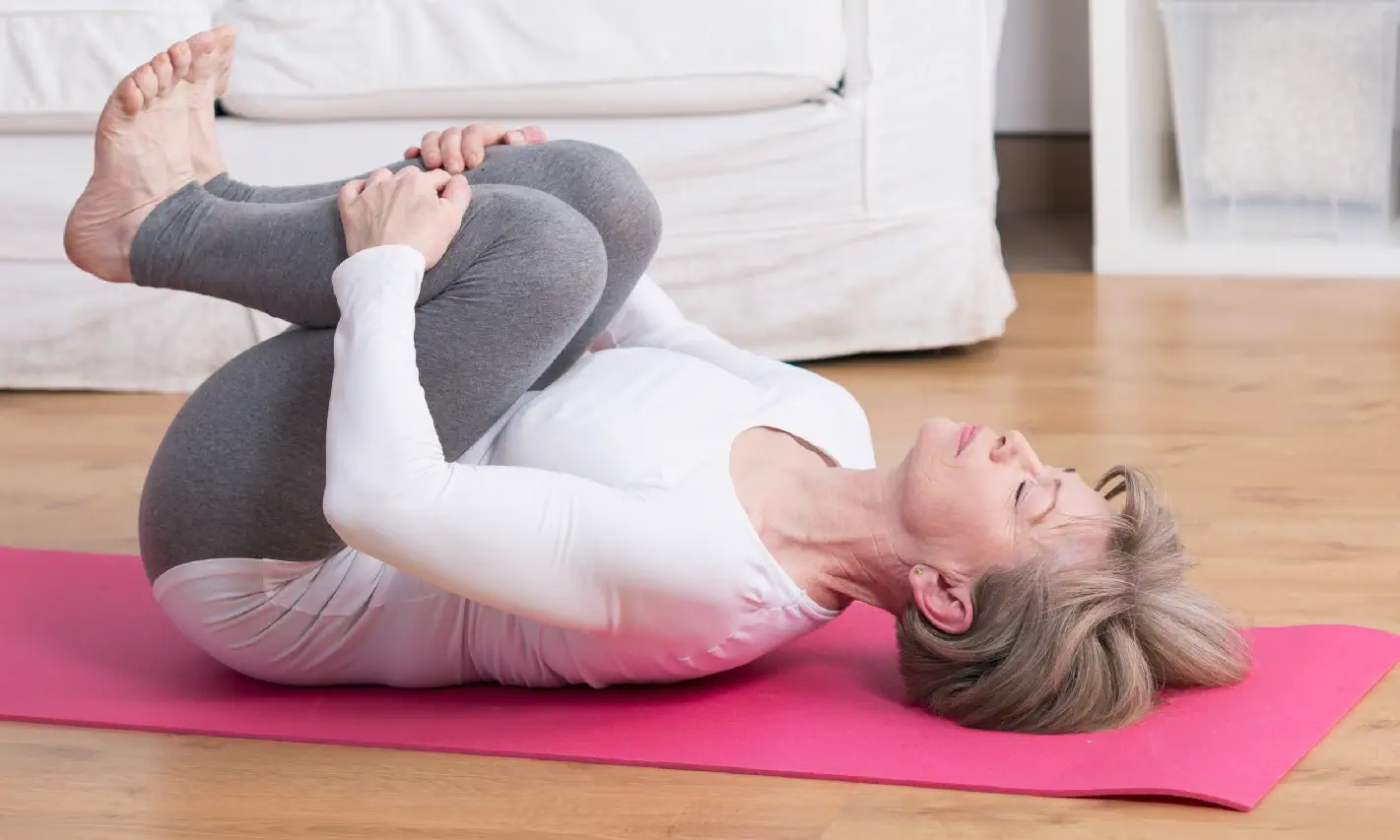
5 Chronic Back Pain Exercises for the Elderly
All of the chronic back pain exercises for elderly that we introduce below should be performed in a chair and in a sitting position. The firmer the surface on which you perform these exercises, the more comfortable and proper posture you will have. You will not need any other equipment to perform these exercises other than a sturdy chair.
While performing the movements, make sure that your feet are firmly on the floor and that your knees are at a 90-degree angle. While performing the exercises, you should sit on the square part of the chair and not on the edge of the chair.
The important thing is that the exercises should be designed in a way that does not put unnecessary pressure on the back while strengthening the muscles around the spine. Also, people should pay attention to their body’s reaction and refrain from continuing the exercise if they feel pain or discomfort. Therefore, choosing the right exercises based on each person’s abilities and physical conditions, under the supervision of a specialist, is very important.
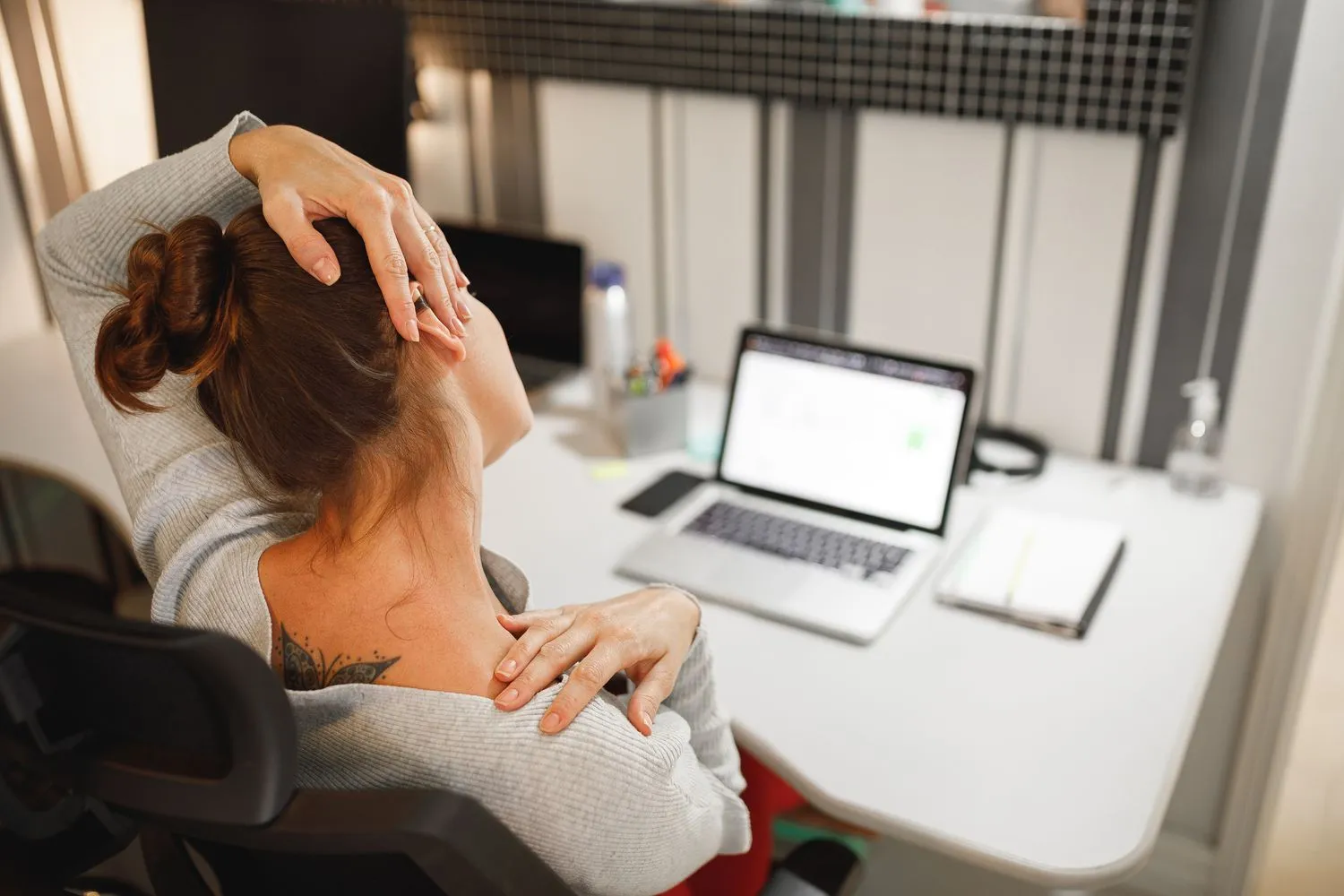
1- Neck and chest stretches
Like hamstring stretches for seniors, neck stretches can help relieve back pain in the elderly. To do this exercise, sit on a chair with your legs flat on the floor. Place your hands behind your head and interlock your fingers. Your thumbs should be next to your ears and at the bottom of your neck. Then tilt your head to one side and turn your face toward the ceiling. Take a deep breath and as you exhale, turn your head to the opposite side and repeat the same movement for the other side.
2- Gentle back stretches
Sit on a chair with your legs flat on the floor, your hands on your lower back, so that your fingers are facing down and your thumbs are around your sides and towards the front of your body. Press your hands firmly against your waist and breathe. As you exhale, slowly arch your spine and head backward. You don’t need to tilt your head back too far while doing this exercise. Hold this position for 5 full, deep breaths. Slowly return to the starting position and repeat this movement 3 to 5 times.
3. Back Stretch
Sit with your spine straight, feet flat on the floor. Take a deep breath and then exhale. Reach your arms behind you and clasp your hands together. If you can’t clasp your hands together, grab your opposite wrists or elbows. Take another deep breath and feel your spine lengthen as you sit up taller. Roll your shoulders up and back, moving your shoulder blades down your back. As you exhale, if your hands are clasped, gently straighten your arms. This will open your upper back. After 3 deep breaths, release your grip and return to a neutral position. Doing chronic back pain exercises for the elderly is very beneficial and reduces back pain to a great extent.
4- Sitting Cat-Cow Move
With your feet firmly planted and your knees at a 90-degree angle to the floor, place your hands on your knees. Try to keep your fingers pointing towards each other and your palms in line with your feet. Take a deep breath, and as you exhale, press your hands together and use them to arch your entire lower spine. This means that your face should be facing the sky as you do this move.
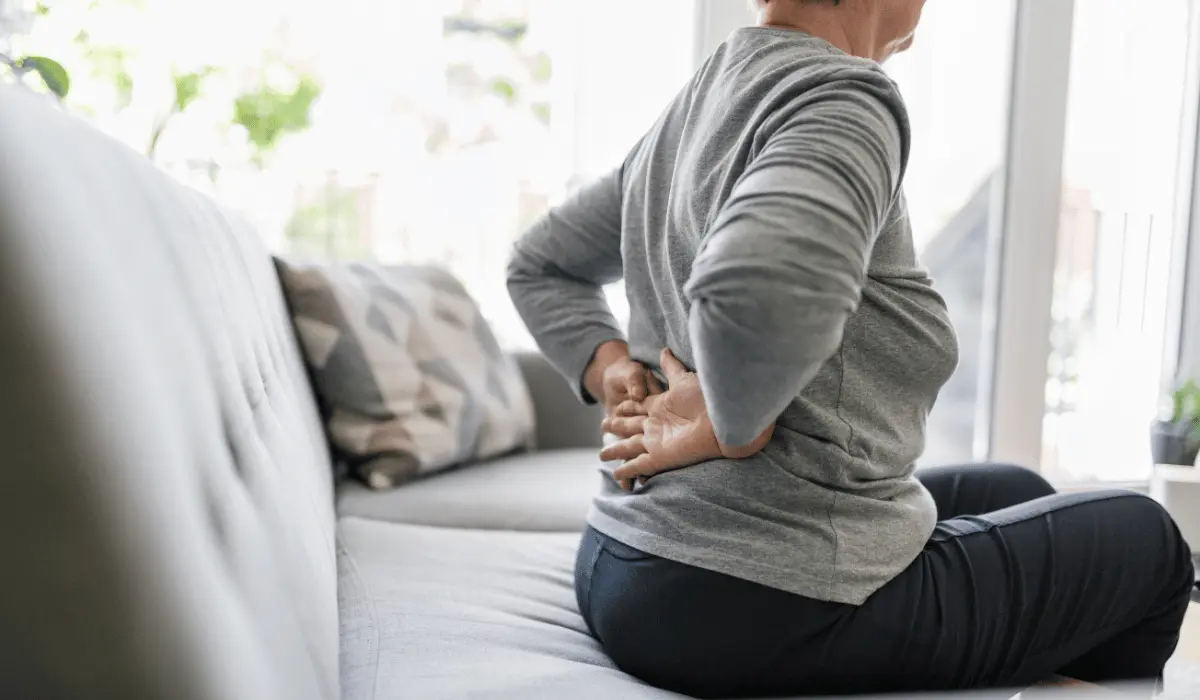
As you inhale again, roll your shoulders forward and pull your navel towards your spine and lower your chin towards your chest, pressing your hands towards your knees. On the next exhale, reverse the movement and again pull your chest through your arms and arch your spine again. Repeat this movement slowly, with proper breathing, 3 to 5 times.
5. Gentle Back Twist
Again, place your feet on the floor at a 90-degree angle and keep your knees locked. Sit very slightly on the edge of the chair. Remember, you don’t want to sit so low that you feel like the chair might tip forward or that you’re unstable in the chair. You’re just trying to create a little more space behind you. As you sit up straight and inhale, raise your arms above your head. As you exhale, slowly twist to the right, placing your left hand on the outside of your right knee and your right hand anywhere that feels comfortable.
You can place it on the chair or the back of the chair, but be careful not to use this hand to do a deeper twist; Because you want to feel the twist evenly throughout your spine, using your arm strength to twist more can cause injury and cause one part of your spine to twist more than the other. Stay in this position and as you exhale, try to twist your lower back just a little more. Take 3 to 5 deep breaths before slowly releasing the twist and doing it on the other side. Repeat this stretch at least twice on each side.
Concluding Remarks
In this article, we have introduced some of the chronic back pain exercises for elderly. As we said in the above articles, just a few simple stretching movements can help treat back pain at home. Our muscles become shorter and lose their elasticity as we age. Avoiding movement and activity only exacerbates these issues and makes our muscles weaker, which is often the cause of back pain. By stretching the muscles of the back and chest and keeping the shoulder and lower back joints active, we can prevent back pain, improve posture and range of motion, and maintain quality of life.
Finally, remember that you should consult a doctor if you have new pain, especially sharp, radiating pain, or a decrease in your ability to take a deep breath. Also, remember that most back pain is caused by overuse and misuse of the muscles of the body. I hope this article is useful for you.
Could you help us make this content even better? What do you love, and what can we improve? Share your thoughts below, feedback is the key to creating better content for YOU. If you also have an experience in this regard, please share it with us and others.

Frequently Asked Questions
How to Relieve Back Cramps?
Exercises like the knee-to-chest stretch can help relax the muscles and reduce pressure on the spine. Also, the back-to-knee stretch improves the flexibility of the back muscles. The seated open-leg stretch also stretches the back muscles and hamstrings, helping to release the cramps. Combining these movements with deep breathing techniques can have a very relaxing effect.
What Are the Best Chronic Back Pain Exercises for Elderly?
There is no specific exercise that is best for everyone, as each person’s needs and physical conditions are different. For some people, strengthening exercises may be more effective, while others will get better results with stretching exercises.
What Exercises Can You do with Back Pain?
If you have back pain, you should consult a doctor or physical therapist before starting any exercise program. Some exercises may put extra pressure on the affected area and make the pain worse. However, gentle stretching exercises can help reduce tension and improve flexibility. Exercises such as knee-to-chest raises are often recommended to reduce pressure on the spine and relieve mild back pain.
